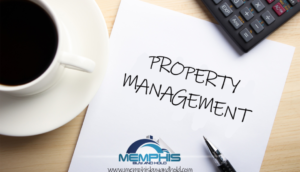Your turnkey property was supposed to be an easy, passive stream of income. Instead, you got the worst-case scenario: the company that “turn-keyed” it paid for renovations that looked nice, but were structurally flimsy and cheap. The building is in a neighborhood that has decent-looking crime statistics online, but the recent closure of the only high school in the area means teenage boys with nothing to do and homeless people squatting in the empty school buildings, so property crime is spiking. And your “established” tenant blew up their kitchen trying to make drugs and poured a bag of concrete down the toilet before they moved out.
Time to sell it, suck up your losses, and move on, right? Not necessarily.
Should You Try to Turn This One Around?
Any property can be profitable—the only question is how much time and money you’ll have to sink into it before it gets there. Before you decide to take the hit and learn the lesson from this one, do a little math. Figure out how much you would have to spend to fix, clean, re-beautify, get a better property manager, and otherwise take care of everything that needs to be done to the house before it can be rented.
Exact numbers aren’t necessary—just come up with a solid rough estimate of your potential costs (in both time and money). Then calculate what you could reasonably do over that timeframe with that amount of money plus (or minus) whatever you get when you (have to pay to) get rid of the bad investment. If there’s a wiser way to achieve your goals, by all means, drop the property. If you think that the old advice about not switching ponies mid-stream is good in this case, here’s what you need to do next.
Owner Up
The first step is to take ownership of the situation. You didn’t do this, but you bought it, and that means it’s your mess to clean up, so own it. Literally. Cut every tie with the previous owners. Fire their contractors, fire their property managers, fire everyone and start over with the absolute basics: You have a crap house in a crap neighborhood and no tenants. Let’s get from there to “winning.”
Finding the Right Property Manager Is Half the Battle
The first step—even before you do any rehabilitation on the structure—is to put in the time and effort you need to find a property manager (PM) that can handle the job at hand. Unfortunately, it’s not something that most management companies make a habit of advertising because they generally don’t want to take on a project like that. But with a bit of research, asking around for referrals, looking up references, and being persistent and thorough, you can find a PM in almost any city that can handle a distressed property. Just take into account that you get what you pay for, so be prepared to pay for their expertise and time until a tenant is procured and they’re earning management fees.
Once you think you’ve found a PM, introduce them to your property, and ask them what they think of it. Ask them if you should sell it or keep it. Talk to them about ideas for correcting the previous flawed renovation work and costs, as well as a plan to attract the best tenant possible for the area.
If you find property manager that can put all this together intelligently and professionally, then you have most of what you need to turn your property around. You’ll still have to manage the manager—but that’s something you should expect from any property, turnkey or not.
CTTO Article Source: www.biggerpockets.com
Memphis Buy And Hold is specializing in locating, purchasing, renovating and managing single-family and multi-unit properties and possesses from 2007 up to the present of experience in real estate investing and property management in the Memphis and Nashville markets.
- Memphis Property Management
- Memphis Turnkey Investment Properties
- DCC Rentals LLC
Discover more from Memphis Buy And Hold
Subscribe to get the latest posts sent to your email.



